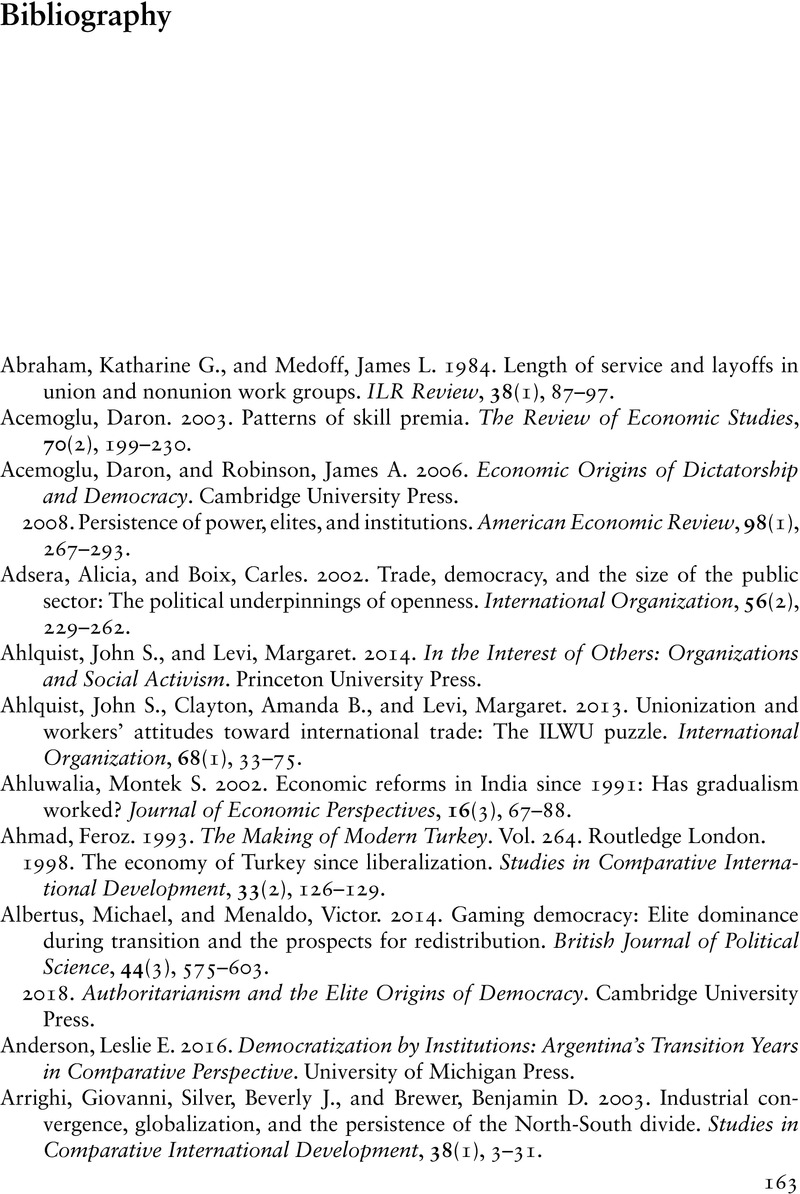 Opening Up by Cracking Down
Opening Up by Cracking Down Book contents
- Frontmatter
- Dedication
- Contents
- Figures
- Tables
- Acknowledgments
- Introduction
- 1 Open Democracies: How Labor Repression Facilitates Trade Liberalization
- 2 Trade Liberalization Around the World: Cross-National Quantitative Tests
- 3 Democracy Is Not Enough: Labor Rights and Trade Policy in Mexico, Argentina, Bolivia, Turkey, and India
- 4 India’s Middle Path: Preventive Arrests and General Strikes
- 5 Opening Argentina: Menem’s Repression of the CGT
- 6 Conclusion
- Appendix
- Bibliography
- Index
- Other books in the series
- References
Bibliography
Published online by Cambridge University Press: 19 October 2022
- Frontmatter
- Dedication
- Contents
- Figures
- Tables
- Acknowledgments
- Introduction
- 1 Open Democracies: How Labor Repression Facilitates Trade Liberalization
- 2 Trade Liberalization Around the World: Cross-National Quantitative Tests
- 3 Democracy Is Not Enough: Labor Rights and Trade Policy in Mexico, Argentina, Bolivia, Turkey, and India
- 4 India’s Middle Path: Preventive Arrests and General Strikes
- 5 Opening Argentina: Menem’s Repression of the CGT
- 6 Conclusion
- Appendix
- Bibliography
- Index
- Other books in the series
- References
Summary

- Type
- Chapter
- Information
- Opening Up by Cracking DownLabor Repression and Trade Liberalization in Democratic Developing Countries, pp. 163 - 176Publisher: Cambridge University PressPrint publication year: 2022


